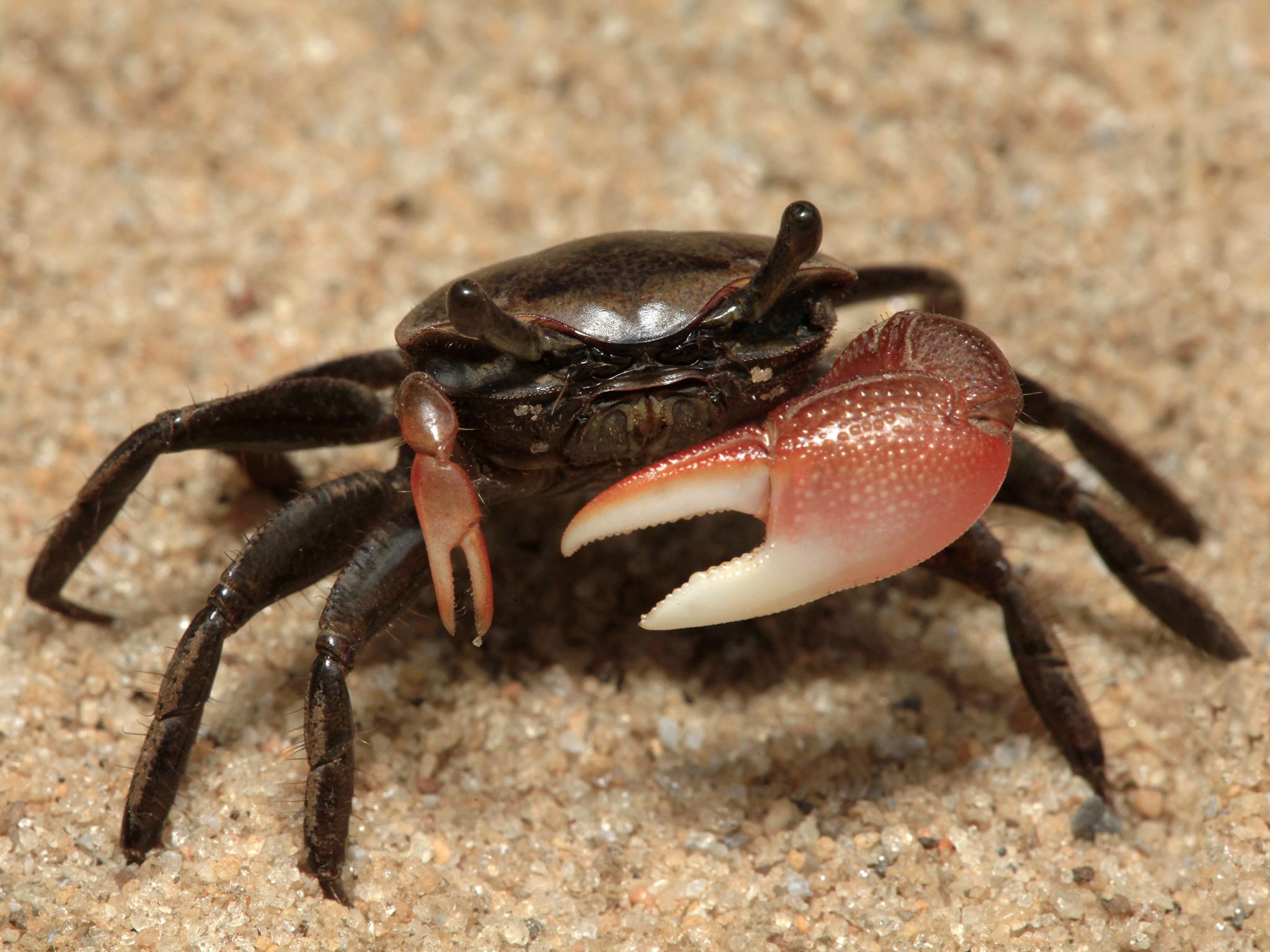The Top 10: Asymmetrical Animals
Most of nature is symmetrical, which is why the exceptions seem so strange


After I came across a wonderful blog post on asymmetrical aircraft, Paul Johns pointed out that the wrybill is an asymmetrical bird, and Dean Bullen suggested a list of the Top 10 such animals – strictly, those “featuring external asymmetry”, as most animals’ interior organs are not symmetrical.
1. Plaice. Young plaice and other flounders are symmetrical but as they spend more time on the sea bed one eye grows round to the side that faces upwards. Nominated by Dean Bullen. As An Hiro pointed out, this nomination takes first plaice.
2. Wrybill. A species of New Zealand plover with its beak curved to the right. Thanks to Paul Johns.
3. Fiddler crab, whose single large pincer can be wider than its body. Nominated by M Bacon. If a male fiddler loses its large claw, it will grow another on the opposite side after moulting. Various other crabs have one claw larger than the other, said Mark Hobb.
4. Narwhal has a helical tusk on its upper left jaw. Thanks to TVAddictStill, who told me there was a Wikipedia page devoted to this subject.
5. Sperm whale has a single nostril on the upper left of its head, its blowhole, while the right nostril has evolved to form a phonic lip, which makes sounds to communicate.
6. Honey badgers of the subspecies signata have a second lower molar on the left side of their jaws, but not the right.
7. Snails. And all other gastropods. Snails’ shells spiral either clockwise or anti-clockwise. Apparently slugs are asymmetrical too, but not so obviously, and no one knows why.
8. Iwasaki’s snail-eater snake. Asymmetry passed from prey to predator. It has asymmetric jaws, which makes it easier to eat snails with dextral (clockwise coiled) shells.
9. Cock-eyed squid. The right eye is round, blue and sunken; the left eye is at least twice the diameter of the right eye, yellow-green, faces upward, and bulges out of the head.
10. Perissodus microlepis: species of scale-eating cichlid fish found in Lake Tanganyika. About half the population has jaws twisted to the left, making it easier to eat scales on its victim’s right flank. The other morph has jaws twisted to the right. The abundance of each morph is regulated by “frequency-dependent selection”.
Next week: Worst conjunctions of book title and author, such as How To Eat Nigella Lawson
Coming soon: Back-formations, such as greed, formed from greedy, which preceded it by 600 years
Your suggestions please, and ideas for future Top 10s, to me on Twitter, or by email to top10@independent.co.uk
Join our commenting forum
Join thought-provoking conversations, follow other Independent readers and see their replies
Comments
Bookmark popover
Removed from bookmarks